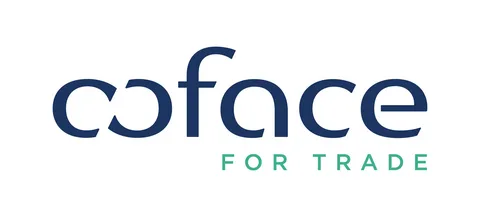Commercial insurance companies are buzzing with excitement over generative AI (gen AI)—and for good reason. This technology has the potential to add a whopping $2.6 to $4.4 trillion to the global economy each year. To put that in perspective, that’s about the size of the UK’s entire GDP in 2023 (roughly $3.3 trillion)!
For insurers, gen AI could be a game-changer—especially in areas like underwriting, risk prediction, and delivering more personalized services. The insurance industry is actually in a great position to benefit, thanks to the massive amounts of unstructured data it handles—things like PDFs, images, Word documents, and web pages—not to mention all the manual processes involved in underwriting and claims.
And insurers are clearly paying attention. In a recent McKinsey survey of over 50 leaders from major European insurance groups:
-
More than half said gen AI could lead to productivity boosts of 10–20%, premium growth of 1.5–3%, and better technical results by 1.5–3 percentage points.
-
A third already have early gen AI projects up and running.
-
20% say their AI capabilities are quite advanced.
-
And 60% report their traditional data is actively improving.
It’s also clear that gen AI is becoming a hot topic—mentions of AI and gen AI in major insurers’ annual reports more than doubled between 2022 and 2023.
So now, the big question isn’t if insurers should adopt gen AI—it’s how to do it right. Based on our work helping companies with their gen AI journeys, we’ve identified six key traits that set the top-performing insurers apart.
1. Focus on a Core Business Area Where Gen AI Can Really Make a Difference
The most successful organizations don’t just experiment with gen AI—they use it to transform something central to their business. A great starting point is to ask, “Which key part of our operations could gen AI significantly improve?”
Take McKinsey, for example. They realized that knowledge management was at the heart of their work, so they built a gen AI-powered platform called Lilli. Lilli has completely reimagined how they handle internal knowledge. It now supports 45,000 users, has answered over 4.5 million questions, and cut the cost per query by an impressive 96%.
Here are some key lessons from their journey:
-
Think beyond the basics. Identify your “next horizon” by bringing together cross-functional teams and having a strong cloud strategy in place. This helps ensure your gen AI solution can scale effectively.
-
Balance cost and performance. Not all tools are created equal. It’s important to choose the right mix of AI models and components that deliver strong performance without locking you into a single vendor.
-
Tackle data challenges early. Before building your solution, make sure you understand where your data lives and how to access it efficiently. For McKinsey, this meant figuring out how to pull useful info from thousands of PowerPoint files.
-
Put serious effort into change management. Don’t just build the tool—help people use it well. McKinsey found that when users are trained properly, they can boost their productivity by more than 20%. But to get that kind of impact at scale (like with 45,000 users), you need to invest in training and adoption just as much as in the tech itself.
2. Focus on End-to-End Transformation to Maximize Value
To really unlock the full potential of gen AI, leading organizations aren’t just focusing on individual use cases—they’re going for end-to-end (E2E) transformations within entire business domains. This means looking at how different AI and gen AI applications can work together within a larger process, creating more value than any single use case could on its own. The big question here is: “Which area of our business would benefit most from an E2E transformation?”
Take claims processing as an example. While things like claims eligibility checks, fraud detection, settlement optimization, and AI chatbots for better customer experience are great on their own, combining them into a full-scale, end-to-end transformation of the claims process can have a huge impact—up to 14 times more, by some estimates!
This huge boost comes from the synergies created when different AI tools work together. When these different use cases support and build on each other, the result is a more efficient and seamless system that drives far more value than individual pieces alone.
3. Combine Gen AI with Other Technologies for Maximum Impact
While gen AI tools like ChatGPT have definitely made a splash, our research shows that the majority of value from AI in insurance actually comes from traditional AI—around 60-80%, with gen AI making up 20-40%. The key takeaway here is that gen AI should complement traditional AI, not replace it. So the big question becomes: “How can we map out our business to identify areas for improvement, whether they’re powered by gen AI, traditional AI, or other tech?”
For example, think about call centers. Traditional systems like voice response and call analytics can be supercharged with gen AI to better identify customer intent and take action. Or consider a claims severity engine powered by AI—this could be paired with gen AI to prevent claims before they happen, by integrating weather data and reaching out to customers personally to avoid potential issues.
This holistic approach—where AI, gen AI, and other technologies work hand in hand—ensures that organizations are tapping into the full potential of all the tools at their disposal to improve operations across the board.
4. Build, Buy, or Wait? Develop a Strategic Approach
Top organizations don’t just dive into building or buying gen AI solutions—they take a step back and think strategically about when it makes sense to develop things in-house versus buying ready-made solutions from vendors. This balance lets them benefit from external technologies while avoiding getting stuck with a single vendor. So the question here is: “Which areas of our business should we focus on building in-house gen AI tools to create a competitive edge?”
For example, when dealing with large language models that use proprietary data, it might make more sense to build a custom solution that fits your exact needs. On the other hand, if you’re looking to integrate gen AI into existing platforms like customer relationship management (CRM) systems, it could be easier and more cost-effective to buy an off-the-shelf solution—especially if it doesn’t require a lot of customization.
Taking a strategic approach means you’re building internal capabilities where it really matters, while also leveraging external solutions to improve overall efficiency and effectiveness.
5. Build Reusable Code for Growth and Easy Maintenance
For organizations that choose to build their own gen AI solutions instead of buying them, it’s super important to create reusable code that can be easily scaled and maintained. Think of it like building an automated assembly line in car manufacturing—where you design flexible components that can be used over and over again.
These reusable components can be packaged into modules that are tailored for different gen AI applications. The big question here is: “What key modular pieces do we need to start building, and how can we set up a scalable ‘recipe’ for this?”
6. Involve Risk Management from the Start to Speed Up Operations
When it comes to managing risks, it’s essential to bring in your internal risk team right from the start of the product development process. The question to ask here is: “How can we rethink and enable risk management while building our gen AI solutions?”
Take a global bank as an example. They recently rolled out a gen AI-powered customer-facing chatbot and made sure to have over 50 meetings with their risk stakeholders early on. They worked together to define clear risk frameworks across various areas, with built-in fail-safes—like the ability to monitor performance in real-time and quickly shut things down if problems popped up. By working closely with the risk team from the beginning, they made sure potential issues were addressed early, helping things run smoothly.
There’s no one-size-fits-all solution when it comes to scaling gen AI, but its potential to drive big changes is undeniable. The top organizations are setting themselves apart by making bold moves—transforming entire domains, balancing build-vs-buy decisions, creating scalable solutions, and fostering strong cross-functional teams. As gen AI continues to grow, these leading organizations are showing the way forward with smart, practical approaches.





